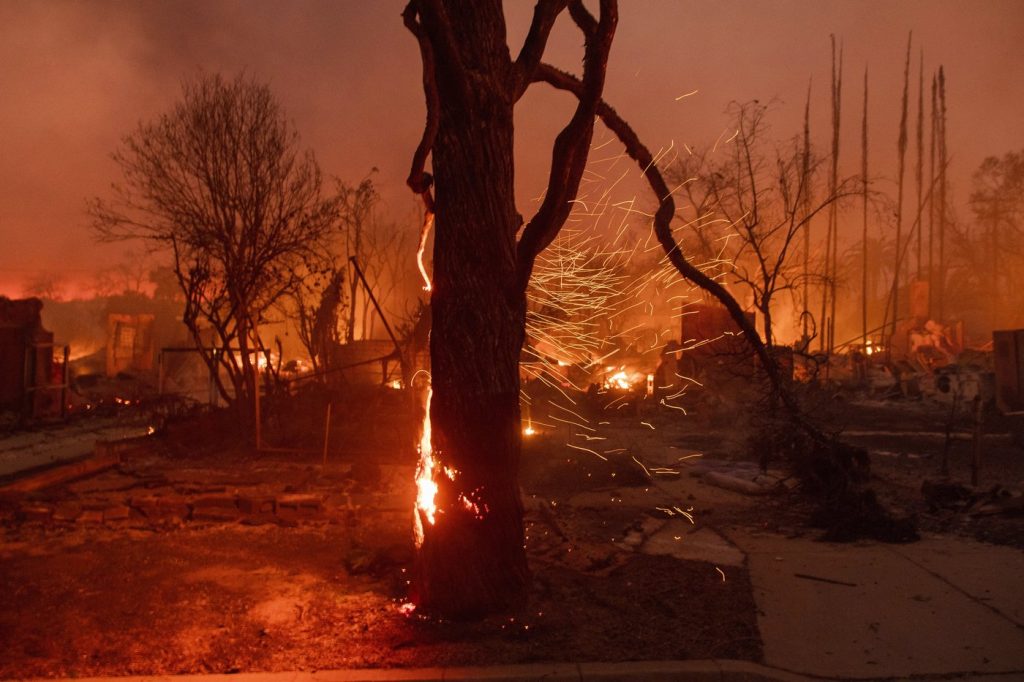LOS ANGELES (AP) - In their ongoing efforts to tackle heat and air pollution in Los Angeles, tree advocates have faced significant challenges. Over the years, initiatives to increase the number of trees in the area have been met with obstacles such as drought, poor maintenance, and pushback from local residents who dislike the mess created by fallen leaves and sap. The recent devastating fires and extreme winds have raised new concerns among these advocates about the viability of their initiatives.
Bryan Vejar, the associate director of community forestry for TreePeople, an environmental nonprofit, shared that city arborists possess "sobering" photos showcasing the aftermath of powerful winds that have uprooted large trees, landing on homes and parkways. These winds also contributed to the out-of-control fires. Areas such as South Los Angeles, Watts, and Inglewood, which historically lack sufficient tree cover, were particularly hard hit. Vejar noted that the quality of air remains hazardous, preventing field crews from conducting timely assessments of the situation.
Many young trees, which require regular watering in their initial years, are likely to show damage from the incidents, leading to concerns about increased mortality rates for newly planted trees. Vejar also emphasized that past fires and strong winds have resulted in the loss of limbs and even entire trees, especially in locations with limited space for root development.
Once it is safe for urban forestry specialists to operate, they plan to inspect, re-stake, and retie trees that have been toppled by wind, as well as replace those that have been lost. However, Will Berleson, a professor at the University of Southern California’s Department of Earth Sciences and a researcher involved with the Urban Trees Initiative, warned that replanting efforts in fire-impacted neighborhoods could be more challenging due to the effects of climate change. He indicated that many mature trees had grown in an era when climate conditions were less extreme, lacking the fluctuations that we are currently experiencing.
Despite the challenges posed by the recent fires, some experts see a silver lining. They view the loss of trees as a chance to educate Los Angeles residents about local plant species and the best options suited to the environment, rather than relying on non-native trees portrayed in Hollywood films. For instance, Aaron Thomas, director of urban forestry at the nonprofit North East Trees, advocates for the use of native species like the coast live oak. This particular tree is not only well-adapted to the region but also resilient to fire, as it relies on burning for reproduction. Thomas highlighted the significance of this tree type, especially since his family members suffered losses from the Eaton Fire while the coast live oaks in his backyard survived.
However, the task of planting climate-resilient trees with expansive canopies remains a complex issue. Community feedback is crucial in determining suitable planting decisions, as larger trees can impede visibility for drivers and face limitations due to spatial constraints above and below ground. Berleson noted that it would take significant time for neighborhoods to regain their pre-fire appearance.
Vejar remains aware of the setbacks his organization will encounter as they move forward. He succinctly stated that the ongoing issues stem from climate change, water shortages, and extreme weather events. In light of these realities, he affirmed that the commitment to building, rebuilding, and nurturing urban forests to enhance resilience against severe weather continues unabated.










